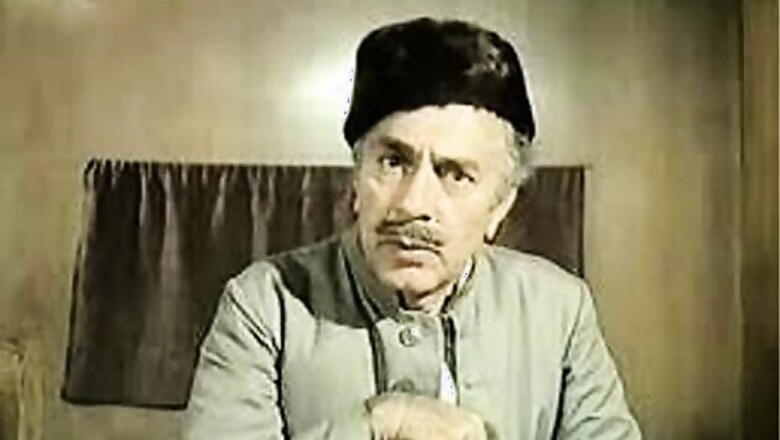
views
Abu Dhabi: Legendary filmmaker M.S. Sathyu has watched his film 'Garm Hava' countless times in almost 40 years since it was made. Each time, the movie, based in post-independence era, leaves him emotionally charged. At the Abu Dhabi Film Festival (ADFF) here, it was no different.
The audience joined him in his sentiment post the screening, which set the ball rolling for the 'Celebrating Indian Cinema' special programme of the fest as a mark of Indian cinema's centenary year.
They listened to Sathyu's predicament in making a film which was 'more sympathetic to the Muslim community, managing it on a beggar's budget' and fighting the Indian censors.
"This film is a bit heavy on the heart. I don't know how many times I have seen it, but every time I get emotionally charged," Sathyu, 83, said here Friday as he addressed the gathering of curious film buffs.
He was emotional also because the screening took place in the birth centenary year of the film's lead actor Balraj Sahni, who died a day after completing the dubbing for this film.
'Garm Hava', called 'Scorching Winds' in festival circuits, tells the tale of a Muslim family staying in Agra. It showcases the hardships faced by the Muslim community in India post-partition, and how while many Muslims chose to leave India to settle in Pakistan, what behaviour was meted to those who decided to stay put.
"The film was not passed by the censor board in India for a year. They felt it was more sympathetic to the Muslim community. I suffered a lot... my distributors had gone, and only with the intervention of then prime minister Indira Gandhi and (then) information minister I.K. Gujral, we were able to get through," Sathyu said.
Back in the 1970s, it was screened at the Cannes International Film Festival. What followed was a premiere in Paris, and then it was released in India - first in the southern market and later in the northern region upon "government request".
The film captures the poignant subject with the sensitivity it deserves, and it is no wonder that it was also chosen as India's entry for the best foreign language film category at the Academy Awards.
Shot in 35 mm Eastman Colour, 'Garm Hava' took the team to Agra and Fatehpur Sikri. There were "no sets, no dolly, no trolley, no cranes", just one lens and 40 to 45 days of shooting in one stretch, said Sathyu.
Another surprising fact that the filmmaker shared was that since he had a "beggar's budget", he couldn't afford to record the sound while shooting. So, he edited the final cut as a silent movie. It was then that he got all the actors, most of whom were part of the Indian People's Theatre Association, to dub for it.
A young filmmaking student was in awe. So were others, who applauded the filmmaker for his vision and for telling a complex tale so simply, yet convincingly.




















Comments
0 comment